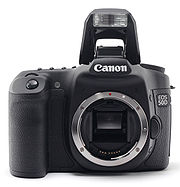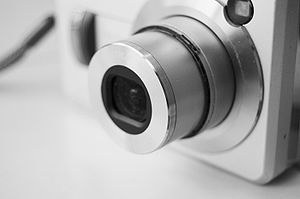Digital Camera Basics:
DSLR vs Compact Digital
Let’s start with a few digital camera basics. What’s the difference between a DSLR and a compact digital camera? Which one is right for you? With the price and feature gaps closing between DSLRs and compact point and shoot digital cameras, buying decisions are becoming more confusing. This article may help to clarify your choices.
DSLR versus Compact Digital
What are the Differences?
A Technical Description
DSLR stands for "digital SLR," or “digital single lens reflex” camera. "Single lens reflex" refers to the mechanics by which you see the image when you look through the viewfinder. The short story is that the light that is reflecting from the scene you are shooting passes directly through the lens, and is bounced off a mirror onto a prism, and then reaches your eye through the viewfinder. Light only reaches the sensor when you take the picture. At that point, the mirror is raised, and light from the scene projects directly onto the sensor to make the image.
In contrast, a compact digital (or "point and shoot") camera constantly exposes the sensor to light from the scene. The camera’s LCD screen becomes an electronic viewfinder. This is easier to view in low light, but harder to see in bright light.
The mirror arrangement in a DSLR usually prevents you from viewing the scene on the screen before the photograph is taken.
However, many newer DSLR models now have a live preview feature, allowing the LCD to be used as a viewfinder in the same way as a compact digital camera, although with the optical viewfinder disabled.
Compare cameras: which one is right for you?
Let’s examine the pros and cons of each type of camera.
The advantages of a DSLR over a point and shoot are:
- (1) the viewfinder on an SLR looks directly through the lens on the camera. This means that your viewfinder shows you a much more accurate representation of the final image than with a point and shoot.
- (2) SLR cameras have interchangeable lenses, allowing the photographer more variety of choice and quality.
- (3) Most DSLRs also have a function that allows the photographer to preview of depth of field.
- (4) The
larger sensor on a DSLR allows for greater depth of field, reduces noise, and produces better image quality. - (5) Although newer compact digital cameras are beginning to provide more control over settings, they are still limited. A DSLR will give you much more flexibility and control over your photographs.
- (6) If you want to capture motion (like children playing or pets running around), you may be frustrated with many compact digital cameras on the market. There is often a delay between when you click the shutter, and when the image is taken. Sometimes, your subject has moved out of the frame by the time the image is made! Talk to your camera retailer if this is an issue for you. Some point and shoots are better than others in this regard, although none will match a DSLR.

Digital Camera Basics: DSLR camera
© Julie Waterhouse Photography
Tip
Determine how "serious" you are about your photography. Are you making memories, or making art for your walls? Do you want to have a small, lightweight camera that you can slip in a pocket, or are you okay with carrying a lot of gear? These choices will guide your purchasing decision.
The disadvantages of a DSLR are:
- (1) DSLRs are dropping in price, but still tend to be more expensive than a point and shoot. This is especially true if you begin to invest in a number of lenses and accessories.
- (2) A DSLR tends to be bulkier and heavier than a point and shoot. If you like to be able to drop your camera in your purse or pocket, you may not want to lug around a DSLR, lenses and a tripod.
- (3) There’s a steeper learning curve with a DSLR. You have more controls to master if you want to take full advantage of all the features available to you.
- (4) DSLRs require a little more maintenance than compact digital cameras. When interchanging lenses, sensor dust may get on the sensor, and need to be carefully cleaned off. Newer DSLRs have self-cleaning mechanisms, but they are not perfect.

Digital Camera Basics: Point and shoot camera
© Julie Waterhouse Photography
I hope these digital camera basics have helped you to compare cameras, clarify your needs, and make a purchasing decision.
Next, you may want to visit the next digital camera basics page to learn What is a Pixel?

